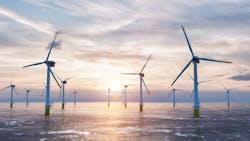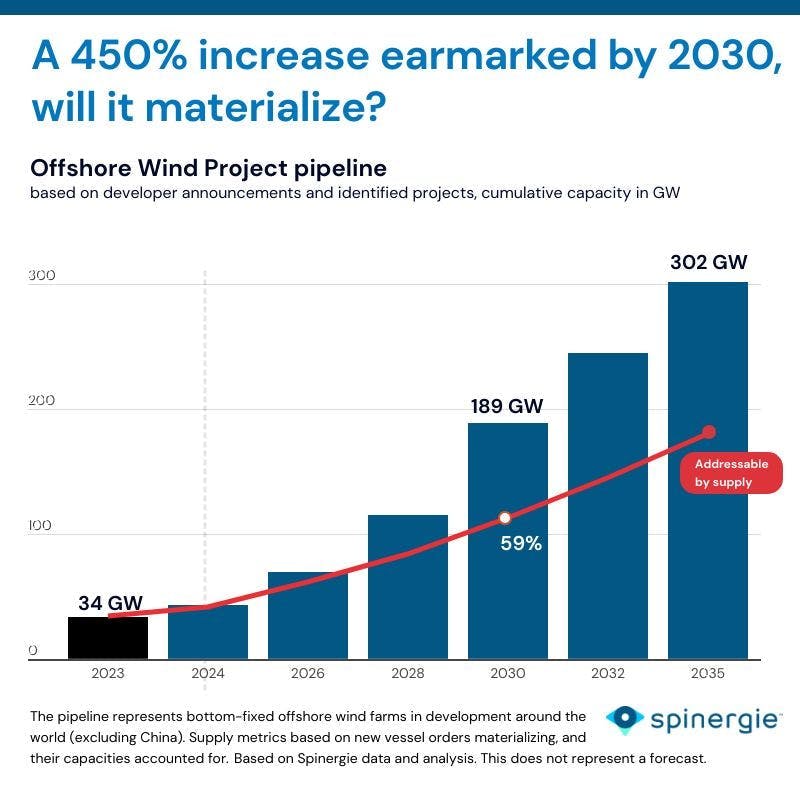Current pipeline of new wind vessel supply risks delays
Offshore staff
PARIS — More than 150 GW of new offshore wind capacity has been earmarked for development in the next six years, which is equivalent to installing the current global capacity five times over, according to Spinergie.
However, an uptick in orders and delivery of new installation vessels has followed, but this might not yet be enough, the maritime market intelligence firm reported. Analysis from Spinergie's 2035 forecast shows that even the current pipeline of new vessel supply—almost half of the projected capacity—risks delays.
In addition, global offshore wind capacity stood at 34 GW at the end of 2023 (fixed-bottom wind farms, excluding China). Worldwide project pipelines add up to 154 GW of additional installations by 2030, representing a 455% increase, Spinergie reported. Many countries have renewable energy build-out strategy goals that add up to an even higher total.
Experiences of the past years have shown that this pipeline might not be entirely feasible, with infrastructure woes in new markets and inflation already leading to delays and cancellations, Spinergie said. Furthermore, a looming shortage of installation vessels—despite an uptick in new orders and deliveries—continues to be one of the greatest challenges, the analyst added. The shortage of WTIVs, among other things, means 40% or more of 2030 government targets will not materialize in time and risks getting delayed or canceled.
04.11.2024

